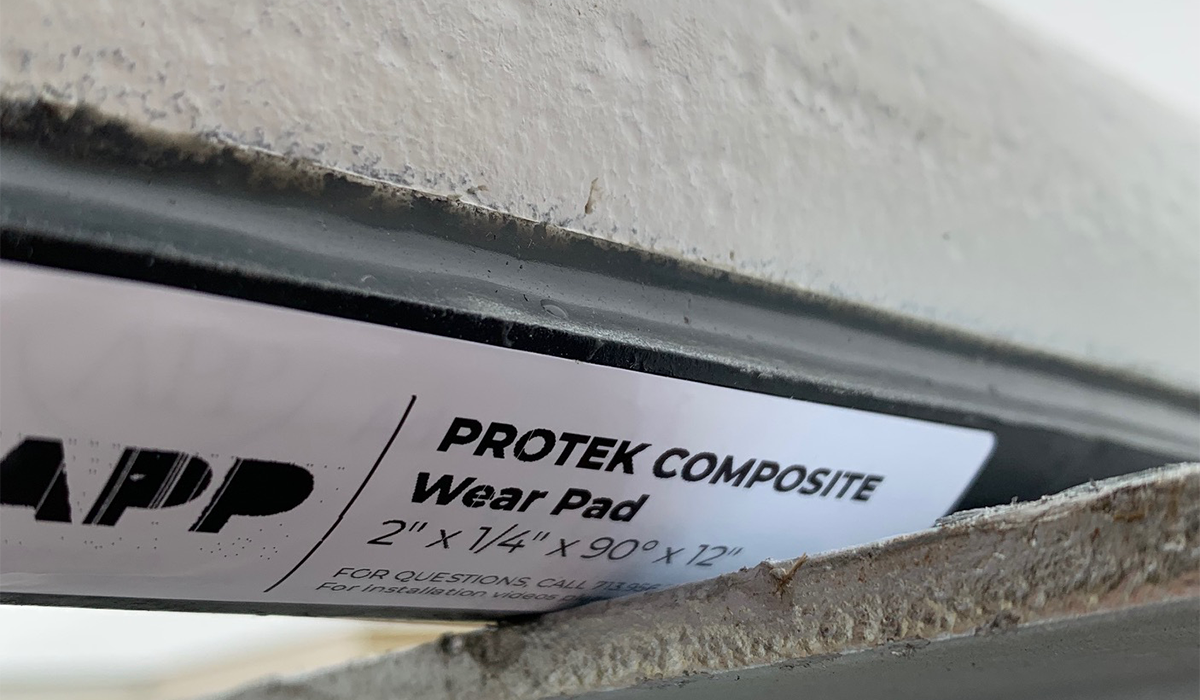
In a high-performance piping system, your pipes are constantly being pounded. Add high impact, high pressure, and thousands of pounds of rushing liquids, and you have a recipe for demolished pipes. Make no mistake: If you want to avoid job disruptions, ruptured pipes, on-site injuries, and costly repairs, your pipes need protection.
Enter wear pads. These simple pipe supports stand between your pipes and destructive forces, and they can save you piles of money in the long run.
Wondering what this pipe padding is all about? We’ve laid out a quick guide to wear pads, along with ways to use them to keep your pipes safe and strong.
What Are Wear Pads?
Wear pads are pipe isolators that add a cushion between your pipes and surrounding surfaces. They’re made of a composite material that fits directly to the outer diameter of your pipe. With wear pads, rather than having the bare surface of your pipe scraping against metal or other hard surfaces, your pipe rests on a composite buffer.
Why Do Your Pipes Need Pipe Padding?
Wait—your pipes are already made of rigid, hard metal, so do they even need protection? When it comes to process piping systems, the answer is a resounding yes. Here are a few reasons why you need pipe padding:
Friction Damage
Your pipes are stacked under thousands of pounds of pressure. That amplifies even seemingly small friction between your pipe’s surface and the beam or support it rests on. When the metal of your pipe scrapes against other ungiving surfaces, it can tear away the outer layer of a pipe’s metal.
The resulting friction damage can create weak spots in your pipeline. In addition to leading to ruptures, even small tears in a pipe’s surface can set off destructive chain reactions. That’s because small surface abrasions can provide a home for microbes and liquids to sink in. Ultimately, crevice corrosion can set in and spread across pipes.
Metal-on-Metal Corrosion
Even if your pipes are unflinching, contact between metal surfaces can destroy pipes. If the metal of your pipes and connected metal surfaces have widely different properties, it can cause galvanic corrosion. For instance, if your pipes are made of carbon steel and they’re resting on stainless steel beams, it can cause your pipes to rust.
Vibration Damage
Especially when piping systems use reciprocating compressors or strong pumps, vibrations can rumble throughout pipes. Unprotected, those reverberations can cause pipes to bang against hard surfaces and wear down.
Why Not Just Use Foam Pads or Composite Sheets?
In the past, piping pros have tried to pad pipes with alternative products, such as foam pads or composite sheets. The idea behind doing so is to lay down a physical barrier directly on the support beam or another resting surface. However, there are a few reasons why these seemingly simple solutions ended up causing worse problems:
- Foam pads: Foam pads simply aren’t designed to handle the elements or the pressure of piping systems. For one, they often tear or pull apart under the weight of pipes. Worse yet, they can harbor harmful microbes that corrode the surface of your pipes.
- Composite sheets: Laying a composite sheet on your beam can cause pipe damage because small particles of grit and dust can slip between your pipe and the sheet. This can cause the composite sheet to act like sandpaper, wearing down the surface of your pipe.
In both cases, wear pads provide safer pipe padding because they fit directly to your pipe. That means they move with your pipe, stop corrosion from creeping in, and keep the pipe protected from the elements.
How Do Wear Pads Protect Your Pipes?
So how do wear pads combat the most destructive forces your pipes face and add protection? Here are a few ways wear pads strengthen and protect your pipes:
They absorb friction.
Rather than letting your pipes surface drag across I-beams or other rough planes, wear pads absorb friction. These highly durable pipe supports create padding for your pipe and keep your pipe’s outer surface safe.
They seal off pipe surfaces.
APP’s ProTek Wear Pads include a pre-roughened edge that bonds securely to your pipe’s surface. This seals your pipe’s outer diameter off from dust, grime, and other corrosive substances.
They protect against metal-to-metal contact.
Your wear pads are fastened directly to your pipe’s surface with an extremely strong epoxy. That means your pipe gains a built-on, nonmetallic surface that shields it from surrounding metals. This layer of protection stops galvanic corrosion and metal-on-metal surface wear.
Discover More Tools to Protect Your Pipes
Looking for more ways to protect your pipes and keep your pipe system strong longer? We have the perfect resource for you. Download our Complete Guide to Pipe Restraints and discover how pipe restraints can reinforce your entire pipe system and save you money in the process.






